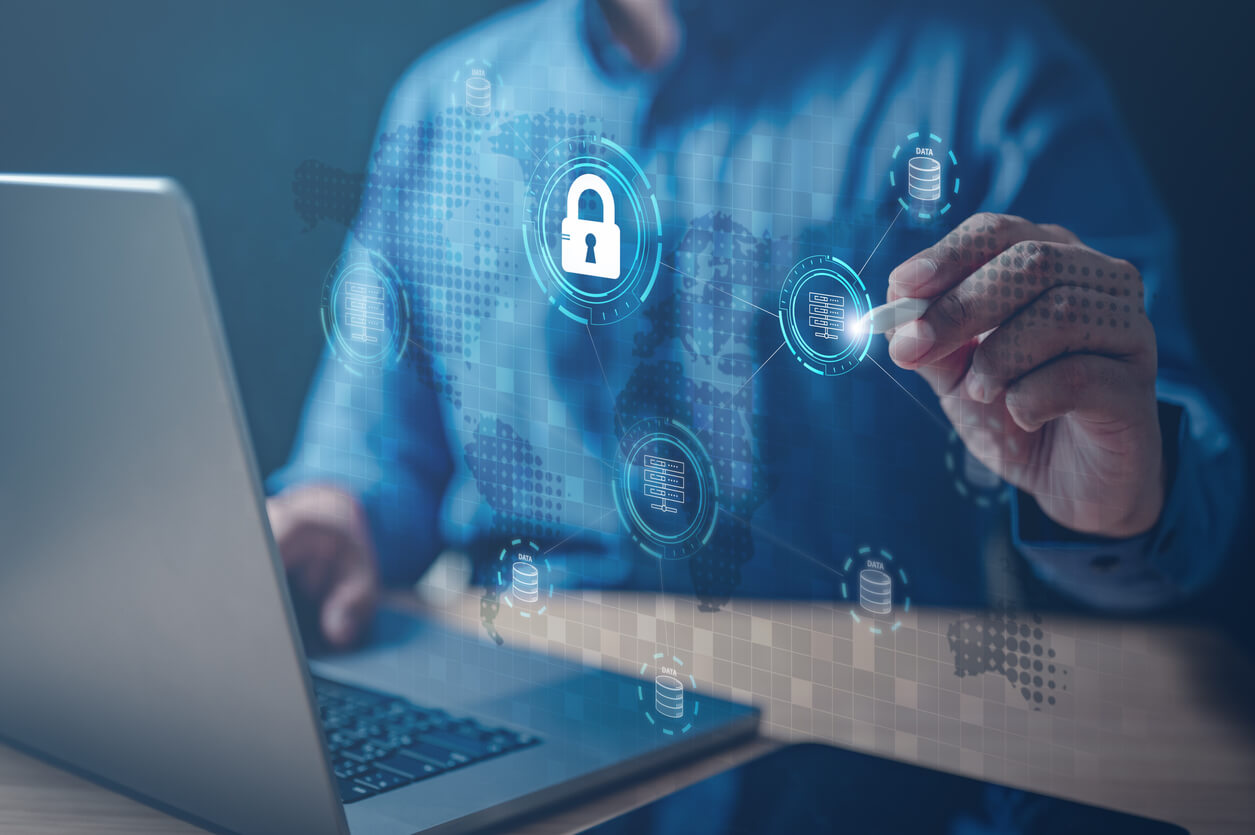As the internet continues to grow, so do the risks to your business and customers from new cybersecurity threats. Losing critical data is a serious concern, but with the right tools and knowledge, you can stay protected.
To help you navigate the cyber security landscape in 2024, we’ve put together a list of key trends shaping the industry. Being aware of these trends is vital for safeguarding your intellectual property, physical assets, and reputation.
Here are 10 Australian cyber security trends your business needs to be across in 2024:
1. AI and Machine Learning Integration
AI and machine learning are transforming cyber security. These technologies boost threat detection and response, making real-time threat analysis and autonomous updates possible. AI-powered security bots are also stepping in to identify and stop threats before they cause harm.
Why this matters: AI detects new and evolving attack methods faster than ever, thanks to its ability to learn and adapt quickly. This means quicker responses and better protection for your business.
What you can do: Consider consulting a workplace and AI specialist to introduce new AI tools that could modernise and enhance your company’s security systems.
2. Cloud Security
With more businesses moving to the cloud, keeping those environments secure is critical. Threats like misconfigured settings and vulnerable apps can expose your business to risk. Strengthening cloud governance and gaining better control over cloud resources are key to staying protected.
Why this matters: Cloud-based services can be a target for data breaches, unauthorised access, and service disruptions—all of which can cripple your operations.
What you can do: Work with your IT team or a cybersecurity expert to identify and fix vulnerabilities before they become a problem. A solid multi-layered cloud security system is essential to protect your business.
3. Zero Trust and Authentication Technologies
Zero Trust Security is all about not automatically trusting any user or device, no matter where they’re coming from. In 2024, more companies are adopting this model along with passkeys and passwordless technologies to improve security and limit access within networks.
Why this matters: As cyberattacks become more complex, traditional security methods aren’t enough. Zero Trust helps prevent unauthorised access by requiring constant verification.
What you can do: While Zero Trust might seem like a hassle, consider the benefits and talk to a cybersecurity expert about whether it’s right for your business.
4. IoT Security
The growing number of Internet of Things (IoT) devices is creating new security challenges. In 2024, we’re seeing more focus on developing stronger security standards, including encryption and certifications for these devices. AI and machine learning are also helping to spot and fix issues faster.
Why this matters: IoT devices are all about connectivity, which opens more entry points for cybercriminals.
What you can do: Use network segmentation to keep IoT devices separate from critical systems, limiting potential attack points.
5. Ransomware Evolution
Ransomware continues to evolve into a more sophisticated and damaging cybercrime. Attacks are targeting both individuals and organisations, using new techniques to cause havoc.
Why this matters: According to Bernie Lai of the Australian Department of Foreign Affairs, ransomware is the biggest cyber threat to Australia.
What you can do: Make sure you have a strong backup and recovery plan in place. It’s also worth familiarising yourself with Australian government policies on ransomware and setting up a company-wide response protocol.
6. Insider Threats
Insider threats, whether intentional or accidental, are becoming a bigger issue. Organisations are now ramping up monitoring systems to catch these risks early, with employee training playing a key role.
Why this matters: While we trust our employees, it’s important to be cautious about who has access to sensitive data.
What you can do: Work with a cyber security expert to set up a system where only the right staff have access to important information. Consider using behaviour-based security solutions that flag unusual activity.
7. Cybersecurity Skills Gap
The demand for skilled cyber security professionals is higher than ever, but there’s a shortage of talent. Companies need to invest in training and development to close this gap.
Why this matters: A World Economic Forum report shows that 71% of organisations have unfilled cybersecurity roles, which can leave businesses vulnerable.
What you can do: Reach out to IT staff augmentation specialists to ensure you have the right talent and skills to keep your business secure.
8. BYOD and Mobile Security
With remote work on the rise, employees are using personal devices for work more often. As a result, mobile device management solutions are crucial to protecting company data.
Why this matters: A survey found that 62% of cyber security professionals are concerned about data loss from personal devices.
What you can do: Put in place strict BYOD policies and make sure security measures are in place to protect sensitive information accessed from personal devices.
9. Generative AI and Deepfakes
Cyber criminals are using AI to create more convincing phishing attacks and even deepfakes. This makes it harder to trust what we see and hear online. On the flip side, AI can also be used to improve cyber security by simulating potential attacks and speeding up response times.
Why this matters: AI is making it easier for attackers to trick people, but it’s also giving us better tools to fight back.
What you can do: Talk to a cybersecurity specialist about how AI can help protect your business.
10. Identity and Access Management (IAM)
With remote work and stricter data privacy laws, managing who has access to company resources is more important than ever. IAM systems help ensure only the right people can access sensitive information.
Why this matters: IAM gives you more control over who sees what, and makes tracking security breaches easier.
What you can do: Evaluate your team’s access needs and get professional help to implement an effective IAM system.
Conclusion
In 2024, cyber security continues to evolve rapidly, with trends like AI integration, zero trust models, and cloud security becoming critical focal points. Organisations must stay proactive by adopting modern technologies, enhancing employee training, and strengthening defences against growing threats such as ransomware, AI-driven attacks, and insider risks.
By implementing strategic measures such as robust IoT protocols, multi-layer cloud security, and advanced identity and access management, businesses can effectively mitigate cyber risks and ensure long-term resilience in an increasingly digital world.




